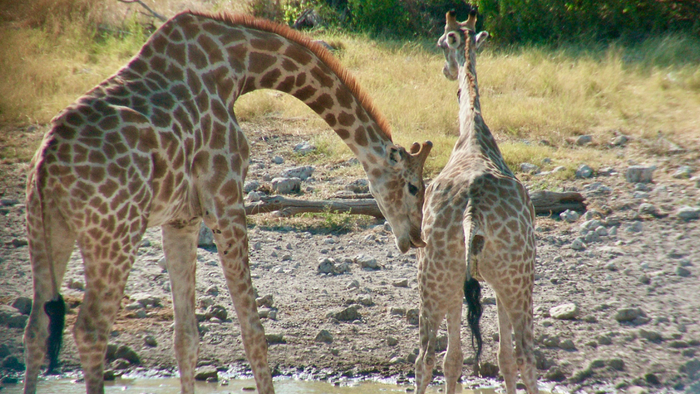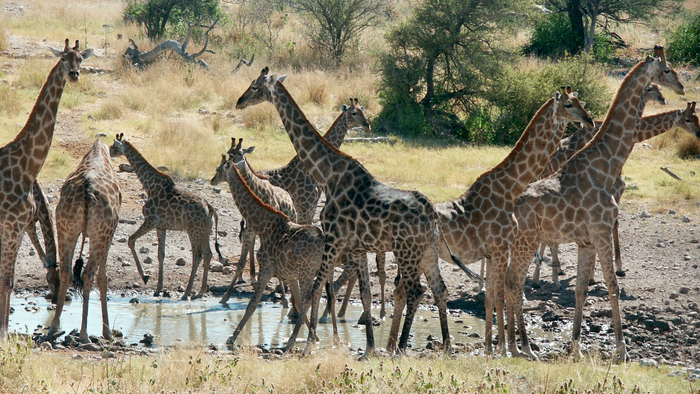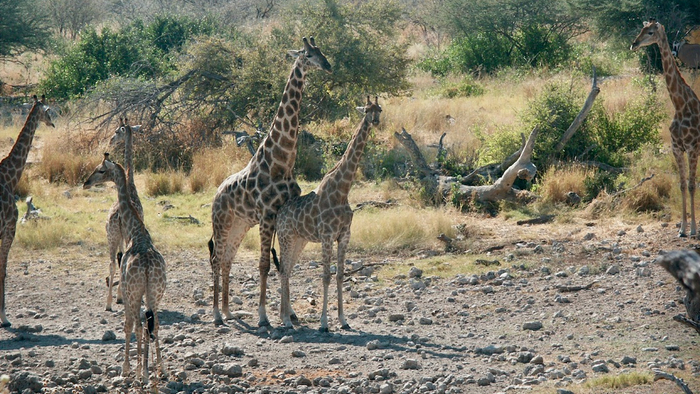Giraffe sex is even weirder than we thought, and it involves pee
Giraffes don't go into heat, don't have a breeding season and don't make mating calls. So how do giraffes know when it's the right time for love?

Finding love can be difficult. But when you're bemoaning your own love difficulties, spare a thought for the giraffe. Giraffes don't go into heat like cats or dogs, don't have a breeding season, don't make mating calls and don't give visual clues that they're ready to mate. So how do giraffes find partners?
It's kind of gross, but this is how baby giraffes are made: a male giraffe — called a bull — nudges a nearby female giraffe — a cow — and sniffs her genitalia. Sometimes he has to nudge her a few times, but eventually the female giraffe widens her stance and urinates for about five seconds into the male giraffe's mouth.
The male giraffe then performs what's known as a "flehmen response" by curling back its upper lip, baring its teeth, and breathing in with its nostrils closed for several seconds. (The name comes from a German word for baring the teeth.) The flehmen response is also used by animals like horses and goats to transfer scents to the vomeronasal organ above the roof of their mouth, a very sensitive component of their sense of smell.
Animal attraction

Humans don't do flehmens; but animals do it when they want to get a good smell of something that interests them. In the case of an aroused male giraffe, he's hoping that chemicals he can detect in the female's urine — called pheromones, which can trigger a social response in some animals — will signal that she's in estrus, or fertile and ready to mate.
When a male giraffe doesn't smell the right chemical signal in her urine, he leaves that female alone and moves on to another. But while most animals will wait until urine is on the ground before they smell it, the giraffe is too tall to do that, Lynnette Hart, a professor at the University of California Davis School of Veterinary Medicine, told Live Science.
Hart is the lead author of a new study on the behavior of giraffes published in the journal Animals. The co-author is her husband Benjamin Hart, an emeritus professor at the same veterinary school, and they've observed these and other behaviors among giraffes during field trips to the Etosha National Park in Namibia in southwest Africa.
The Harts were able to get especially close to dozens of giraffes gathered near water holes in the park; usually giraffes can be seen only at a distance and run away when they are approached, Lynette Hart said. "This was really unique, to be right up close."
Sign up for the Live Science daily newsletter now
Get the world’s most fascinating discoveries delivered straight to your inbox.
Giraffe sex

Mate-finding can be a lot of work for male giraffes. The Harts observed bull giraffes approaching cow giraffes roughly 150 times, but they only saw one time when the approach led to consummation. Once all these steps occur, giraffes mate in the manner of most mammals by the bull mounting the cow. Sex is conducted at a precarious height above the ground and lasts only a few seconds.
If she gets pregnant, the female giraffe will gestate for a whopping 400 days before she gives birth standing up, so that her baby giraffe is well developed enough to stand and walk when it's born.
Tom Metcalfe is a freelance journalist and regular Live Science contributor who is based in London in the United Kingdom. Tom writes mainly about science, space, archaeology, the Earth and the oceans. He has also written for the BBC, NBC News, National Geographic, Scientific American, Air & Space, and many others.









